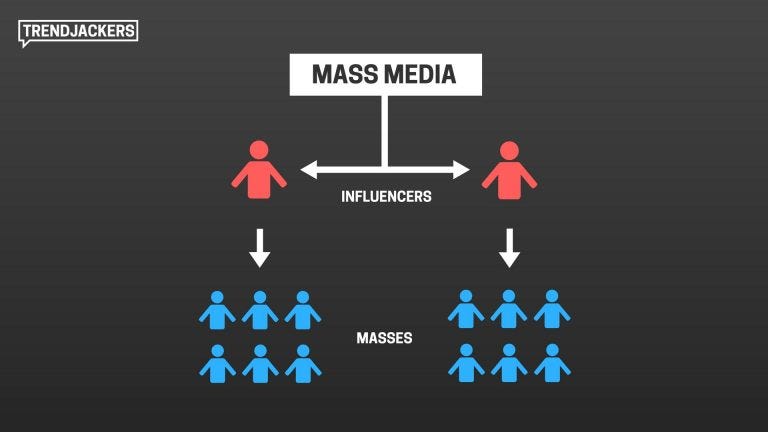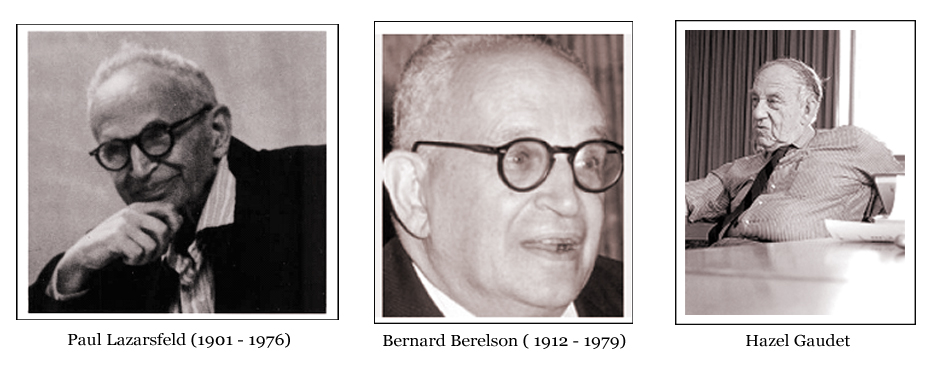
The two-step flow theory is a communication theory that suggests that information flows from the mass media to opinion leaders and then to the general public. Opinion leaders act as intermediaries, interpreting media content and disseminating it to others.
The two-step flow theory was developed in the 1940s by communication researchers Paul Lazarsfeld, Bernard Berelson, and Hazel Gaudet. They conducted a study called the Erie County Study between 1940 and 1941 to understand the process by which the media influence voting behavior during presidential elections. Their research suggests that opinion leaders – people who understand politics and often discuss politics with others – play an important role in mediating the influence of the mass media. These opinion leaders have a greater influence on the political views of their peers than the media itself. This insight led to the formulation of the two-step flow theory.

The Two-Step Flow Theory is built on three key concepts, opinion leaders, information flow, intermediaries.
Opinion Leaders are well-informed and knowledgeable individuals on social networks, often seen as experts in a particular field, topic or aspect. They actively consume media content and participate in discussions among like-minded individuals. Theoretically, opinion leaders play a crucial role as intermediaries between the mass media and the general public. They are seen as influential figures responsible for interpreting, filtering and communicating information to others.
According to the two-step flow theory, information flow is not a direct process from the mass media to the public. Instead, there are two stages of information flow. Information first reaches opinion leaders through the mass media, who then share and discuss it within their social circles. This secondary sharing and discussion creates a more nuanced and filtered version of the original message.
Opinion leaders play the role of intermediaries in the information dissemination process. They filter, interpret, and repackage information from the media to make it more accessible and relevant to their followers and peers. These intermediaries help bridge the gap between the complexity of mass media coverage and public understanding.
In conclusion, the basic idea of the two-stage information flow theory is that the mass media do not have a direct and uniform influence on the general public. Instead, opinion leaders act as intermediaries in their social networks to influence the interpretation and dissemination of information. The theory emphasizes the important role of interpersonal communication and opinion leaders in influencing public opinion and decision-making.
Reference :
Choi, S. (2015). The two-step flow of communication in Twitter-based public forums.┬ĀSocial science computer review,┬Ā33(6), 696-711.
Mahr, N . (2022).┬ĀWhat Is the Two-Step Flow Communication Model?┬ĀStudy.Com. https://study.com/learn/lesson/two-step-flow-communication-model-theory-importance-examples.html
Lazarsfeld, P. F., Berelson, B., & Gaudet, H. (1968).┬ĀThe peopleŌĆÖs choice: How the voter makes up his mind in a presidential campaign. Columbia University Press.
Nisbet, M. C., & Kotcher, J. E. (2009). A two-step flow of influence? Opinion-leader campaigns on climate change.┬ĀScience Communication,┬Ā30(3), 328-354.

This paper explores the Two-Step Flow Theory, whereby information flows from the mass media to opinion leaders and then to the general public. Developed by Paul Lazarsfeld in the 1940s, the theory explores how the media influences voter behaviour, emphasising the critical importance of opinion leaders in moderating media influence. The core concepts of the theory are opinion leaders, information flows and mediators. Opinion leaders are usually intellectuals and experts in social networks who interpret and filter media content to make it more palatable to the public. The article highlights the importance of interpersonal communication and opinion leaders in influencing public opinion and decision-making, challenging the traditional view that the media directly influences the public. This is a very well presented and detailed article!